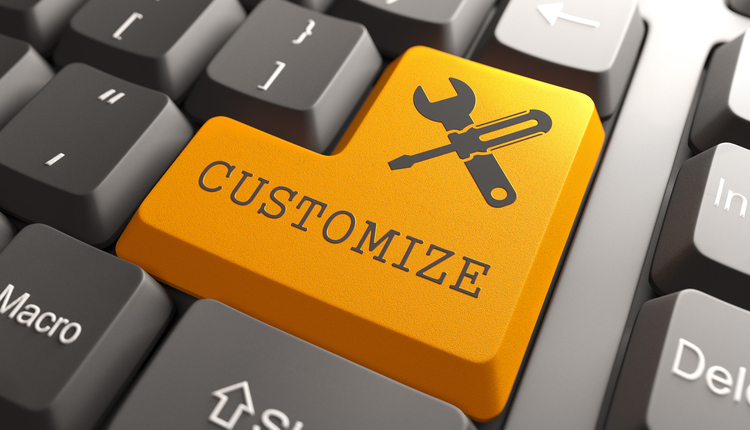Yogi Berra once said, “When you come to a fork in the road, take it.”
Believe it or not, that advice isn’t as silly as it sounds, especially when the fork in question is an opportunity to improve the efficiency of your material handling.
The average fulfillment center is full of such opportunities. And, thankfully for your operation, many of them are easy to spot. Here are some signs that it’s time to hit the “refresh” button on your warehouse processes and consider some level of automation.
Fork One: When Order Volumes Actually Do Warrant Investments in Automation
In e-commerce sales, where growth is the name of the game, you need to make absolutely sure that your fulfillment engine can keep pace with your sales trajectory. After all, every “buy button” click is not just a source of revenue; it’s a promise to deliver. No e-tailer wants its fulfillment operation to be the bottleneck to growth. Sometimes, that requires automation to support the needed throughput.
But be careful here. Orders that spike after a special promotion or black swan event may not sustain over the long haul. Before forking over precious capital to invest in warehouse automation, make sure your forecasts are based on reliable projections and not unfounded optimism.
Fork Two: When Adding More Staff Won’t Add Value
If your knee-jerk response to increasing order volumes is to hire more staff/temps to keep up, it may be time to re-think that approach.
For one thing, the logistics industry is in the midst of a massive labor shortage, which means there’s no guarantee that you’ll be able find the number or caliber of personnel you’ll need, especially during the holidays. For another, your fulfillment center(s) may already be so congested that bringing on even a few more associates could create a physical constraint that will erode overall productivity.
If labor management has become a challenge or you’ve noticed that associates are routinely getting in each other’s way, it could time to replace people with equipment or technology.
Fork Three: When It (Literally) Looks Like It’s Time for An Upgrade
Even in this data-driven era, there’s still no substitute for the powers of visual observation. (Or as Yogi might say, “You can observe a lot just by watching.”)
When you and your supervisors are present on the fulfillment center floor, it tells a story like no key performance indicator (KPI) report can – including whether or not people are following your standard operating procedures (SOPs), who’s working at maximum capacity (versus who’s just doing a great job of looking busy), and which clogged areas are truly a result of space, equipment, or design constraints rather than haphazard work-arounds.
Trust these visual inputs much like you’d trust your gut, because if they suggest that things can only be improved by doing things differently or less manually, it definitely bears looking into.
Fork Four: When Technology Promises a Rapid ROI
When it comes to upgrading your facility’s equipment or introducing new automation, there’s a fine line between being an early adopter and being a troglodyte – and smart businesses are pros at knowing where that line is.
It’s never a good idea to automate for automation’s sake, but some technology decisions are no brainers. In a high-volume fulfillment environment, simple, inexpensive technology like box erectors and tape machines can pay for themselves almost immediately. By contrast, if the potential payoff has a long runway – say three years or more – proceed with caution. In this day and age, material handling innovations proceed at such a rapid pace that you might need to consider another upgrade within that timeframe.
Fork Five: When Benefits Bring Value Beyond Increased Productivity
Most companies adopt fulfillment automation to increase speed and productivity. However, there are other advantages that can and should factor into your technology go/no-go decisions.
For example, don’t underestimate the huge role that warehouse automation or other improvements can play in improving order accuracy and customer satisfaction. After all, it takes a lot of time and money to rework an improperly filled order before it goes out the door, and that doesn’t even begin to take into account how much you’ll pay for returns – and quite possibly, lost business – if that inaccurate order actually reaches your customer.
Technology certainly needs to pay for itself in added productivity, but the case for automation investments should not ignore the less obvious benefits – particularly if you’re experiencing problems with order and inventory accuracy. Voice picking, for instance, not only increases productivity, it does so with near-perfect accuracy. That results in fewer re-works and returns, and much happier customers.
Fork Six: When the Time Is Right for You (Invest in Equipment and Technology at Your Own Pace)
In the midst of all this advice, it’s important to remember that investing in technology and equipment is a process, not an event -- and that the most sensible strategy for warehouse automation may be a more evolutionary, modular approach.
While your business is gaining traction, that may mean predominantly manual processes supported by a warehouse management system (WMS). As order volumes increase, it may make sense to incorporate other forms of automation like box erectors and automatic void-fill systems. Finally, as your business matures and requires high-volume, high-velocity picking and shipping, it may make sense to invest millions in advanced material handling methods that integrate with your WMS.
A modular approach allows your company to deploy systems and automation when (and only when) your volume dictates. As a result, you can funnel available cash to wherever it’s most needed and avoid getting tied into inflexible processes or investments that may not be a good fit for your business as it grows.
As Yogi once said, “The future ain’t what it used to be.” Tomorrow’s warehouses will feature a lot fewer people and a lot more technology. They key is to be smart about what technology you deploy, and when.
Harry Drajpuch is Chief Executive Officer for Amware Fulfillment, a national 3PL that helps brands scale warehouse fulfillment operations to keep pace with business growth. With fulfillment centers in every region of the country, Amware enables 1–2 day delivery to 98% of the United States. Visit www.amwarelogistics.com for more information.














